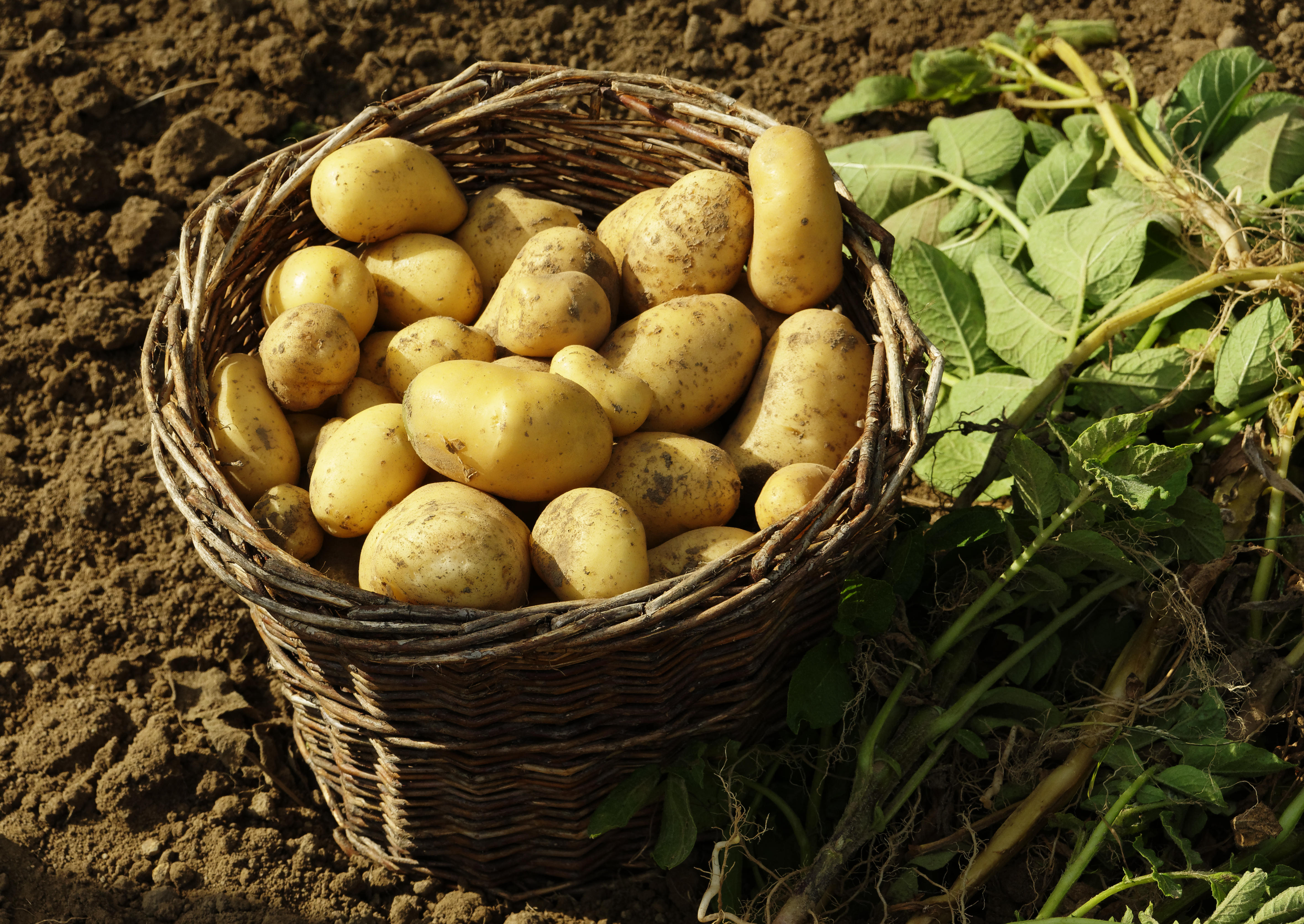How to harvest potatoes – to make the most of your crop
Find out how to harvest potatoes of every shape and size for the best results


Knowing how to harvest potatoes is key if you want to make the most of home-grown produce. The excitement of unearthing the crop to discover exactly how many tasty tubers your plant has provided has to be a high point of every veg gardeners’ year and is a great way to encourage children and first-time veg growers to grow their own.
Whether you are growing potatoes as baby new or earlies to enjoy straightaway or are growing maincrops because you want to store potatoes, the harvesting technique is largely the same, but it is worth getting it right if you want to avoid damaging the produce.
Recognizing the key signs that signify when to harvest potatoes is also useful for getting the best results, and there are plenty of unusual varieties to tempt you. From nutty Pink Fir Apple, strong sweet tasting Jazzy to the curious and spectacular floury Salad Blue, potatoes come in all shapes and sizes.
Learning how to harvest potatoes confidently is pretty straightforward and hugely rewarding. ‘Potatoes are important to both the self-sufficient gardener and the gourmet gardener,’ say the team at West Coast Seeds. ‘Easy to grow and highly nutritious, there is a variety for every use in the kitchen. Some for baking, some best in salads, and some suited as side dishes like French fries.’
How to harvest potatoes
Potatoes are grouped into several different types: baby or new potatoes (also known as first earlies); second earlies and maincrop varieties. Each are planted at slightly staggered times throughout the spring and are ready for harvesting from June through to fall before the frosts arrive.
No matter which type of potato you are growing its worth paying close attention to the plant’s leafy top growth to help decide the best time to lift them.
‘To harvest potatoes, wait until about two weeks after the tops have died down,’ say Burpee's expert team. ‘Carefully dig up the potatoes with a shovel or spading fork – you’ll want to avoid cutting or bruising the potato during this process. Let your potatoes dry for about two hours, and you can wipe off dirt – do not wash with water.’
Design expertise in your inbox – from inspiring decorating ideas and beautiful celebrity homes to practical gardening advice and shopping round-ups.
How to harvest container grown potatoes
If you are growing potatoes in a container or growing potatoes in a bag, harvesting can be much easier than if they are grown in your vegetable garden. Many planters have flaps or doors that can be opened to enable easy access to the tubers, ideal for picking a small quantity while leaving the remainder of the crop to continue growing. These are top rated at Amazon and are really attractive additions to a patio.
Another popular method, ideal if you are looking for a larger amount or intend to store your produce to use at a later date is to simply empty the container or bag, compost and all, on to a plastic sheet.
Root through the soil with gloved hands to sift out the potatoes or use a specialist, and very handy potato harvesting scoop.
Can you harvest potatoes too early?
Unearthing potatoes before the plant has flowered is possible, but the crop is likely to be small and rather disappointing. Instead, it’s best to wait until two weeks after the tops have died back as this signifies that the tubers have reached their maximum potential.
Can you harvest potatoes too late?
Leaving potatoes in the ground too long will lead them to rot and spoil. First and second earlies, which are usually grown as new or baby potatoes tend to have thin skins so should not be left longer than two or three weeks longer than their harvest time.
Maincrop varieties have much thicker covering and store well, but do not like sitting in wet, boggy ground or in frosty conditions so aim to harvest 20 weeks after planting, allowing an extra 10 days in the soil so the tubers can cure.
Always discard any tubers that are soft or have turned green, as they can prove poisonous.

Journalist Jill Morgan has spent over 20 years writing and editing gardening, interior and property features. Titles she has worked on include The English Home, House Beautiful, Ideal Home, Houzz and Modern Gardens and she writes regularly for H&G as a Contributing Editor. Whilst she is a dab hand at renovation projects and DIY, she is happiest when out digging in the garden or planning a new border.